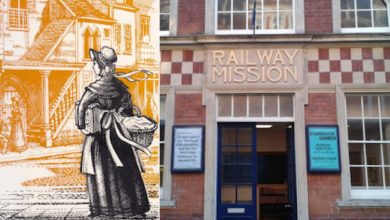EFL fixtures: I’ve been to all 92 Football League grounds this is every League One stadium from worst to best, which ones you should visit this season and which to stay well away from: OLIVER HOLT

Here is a summary of the article in 6 paragraphs, humanized to 2000 words:
As a football enthusiast, I’ve had the privilege of visiting all 92 English football stadiums, and I must say, each one has its unique character and charm. Some are beautiful, while others are not so much, but they all hold a special place in the hearts of their community and the fans who support them. My journey to visit all 92 stadiums was a labor of love, and on April 1, 2025, I finally completed it. It was a thrilling experience, and I’m excited to share my thoughts on the League One stadiums. From the quirky to the magnificent, each stadium has its own story to tell, and I’m eager to dive into the details.
My rankings of the League One stadiums may surprise some, but I’ve based them on my personal experience and the overall atmosphere of each ground. Starting from the bottom, Sixfields, the home of Northampton Town, ranked 24th, with its soulless and derelict feel. The Brick Community Stadium, home of Wigan Athletic, followed closely, with its lack of character and identity. The Select Car Leasing Stadium, home of Reading, was next, with its unremarkable design and lack of personality. These stadiums, although not the most impressive, still have their loyal fan base and a sense of community that makes them special. As I reflect on my visits to these stadiums, I’m reminded that even the most unassuming grounds can have a profound impact on the fans who call them home.
As I move up the rankings, I come across stadiums that are steeped in history and tradition. The Lamex Stadium, home of Stevenage, is a decent little ground with a good atmosphere, while Field Mill, home of Mansfield Town, is the oldest continually used stadium in the league. The Cardiff City Stadium, home of Cardiff City, has a passionate fan base, but its unappealing exterior and unremarkable interior left me underwhelmed. On the other hand, stadiums like Oakwell, home of Barnsley, and the New York Stadium, home of Rotherham United, showcase a perfect blend of history and modernity. The West Stand at Oakwell, designed by the famous football architect Archibald Leitch, is a thing of beauty, and the New York Stadium’s bold design makes it a local landmark. These stadiums are a testament to the rich history and dedication of their fans, and I feel fortunate to have experienced them firsthand.
The top 10 stadiums in League One are a mixed bag, with some surprise inclusions. The University of Bradford Stadium, home of Bradford City, is a fine stadium with a rich history, while the Kenilworth Road, home of Luton Town, is a quirky and charming ground that’s steeped in tradition. The Home Park, home of Plymouth Argyle, is one of the best football experiences in the league, with its beautiful Mayflower Grandstand and passionate fan base. The Cherry Red Records Stadium, home of AFC Wimbledon, is a testament to the power of community and fan ownership, with its kitsch statue of Dave Beasant and illustration on the walls. St James Park, home of Exeter City, is a model of how a stadium should be, with its character, care, and camaraderie. Each of these stadiums has its unique charm, and I feel grateful to have had the opportunity to experience them.
As I reflect on my journey, I’m struck by the sense of community and passion that defines each stadium. From the fans who have supported their team through thick and thin to the owners who have invested their hearts and souls into their clubs, every stadium has a story to tell. The Edgeley Park, home of Stockport County, holds a special place in my heart, as it’s the stadium where I first fell in love with football. The stadium’s history, character, and sense of community make it a truly special place, and I feel fortunate to have experienced it. As I look back on my journey, I’m reminded that football stadiums are more than just places to watch a game – they’re the heart and soul of their communities, and they deserve to be cherished and respected.
In conclusion, my journey to visit all 92 English football stadiums has been a wild ride, full of surprises and delights. From the quirky to the magnificent, each stadium has its own unique character and charm. As I look back on my experiences, I’m reminded of the power of football to bring people together and create a sense of community and belonging. Whether you’re a die-hard fan or just a casual observer, each stadium has something to offer, and I encourage everyone to get out and experience the beauty of English football for themselves. As I eagerly anticipate my next visit to Edgeley Park, I’m reminded of the feeling of going home, and I know that I’ll always treasure the memories of my journey to visit all 92 English football stadiums. The sense of nostalgia and longing that comes with visiting these stadiums is a feeling that I’m sure many fans can relate to, and it’s a testament to the enduring power of football to touch our hearts and minds.








